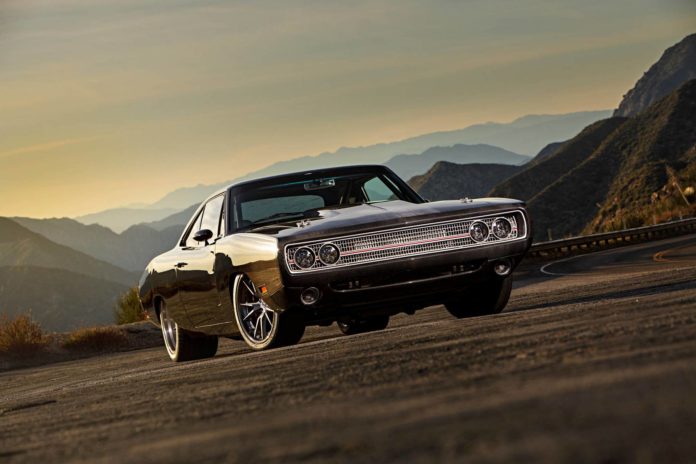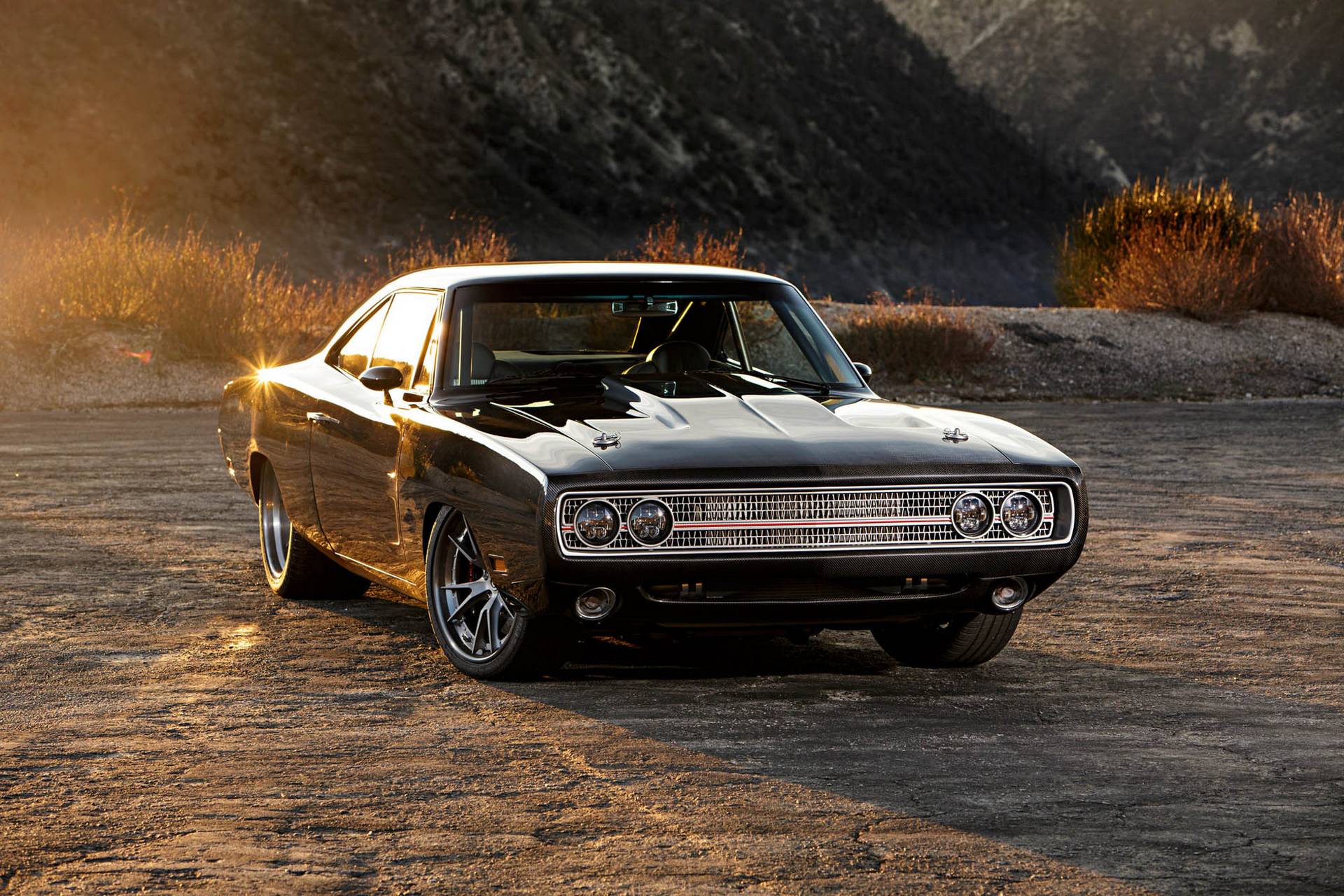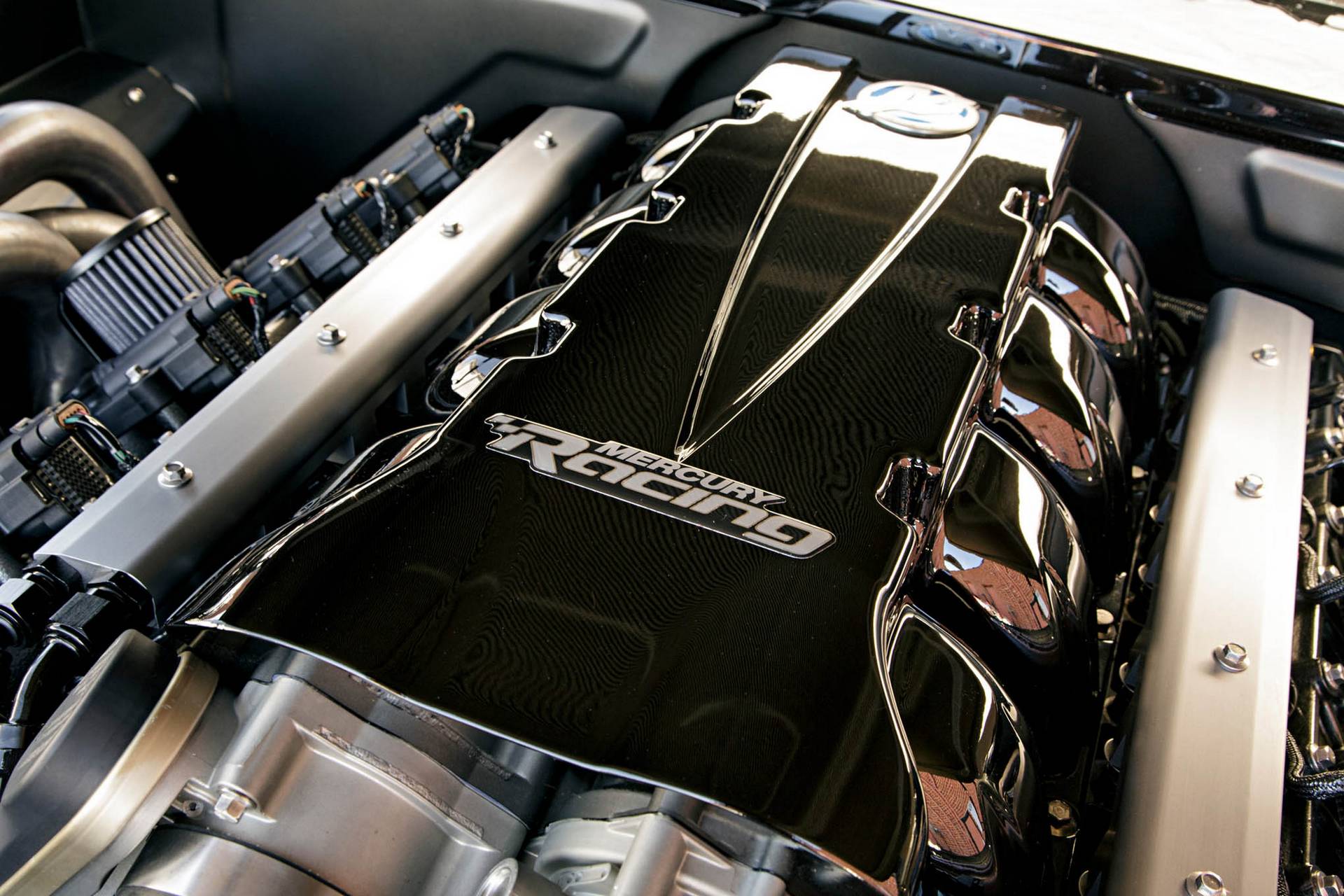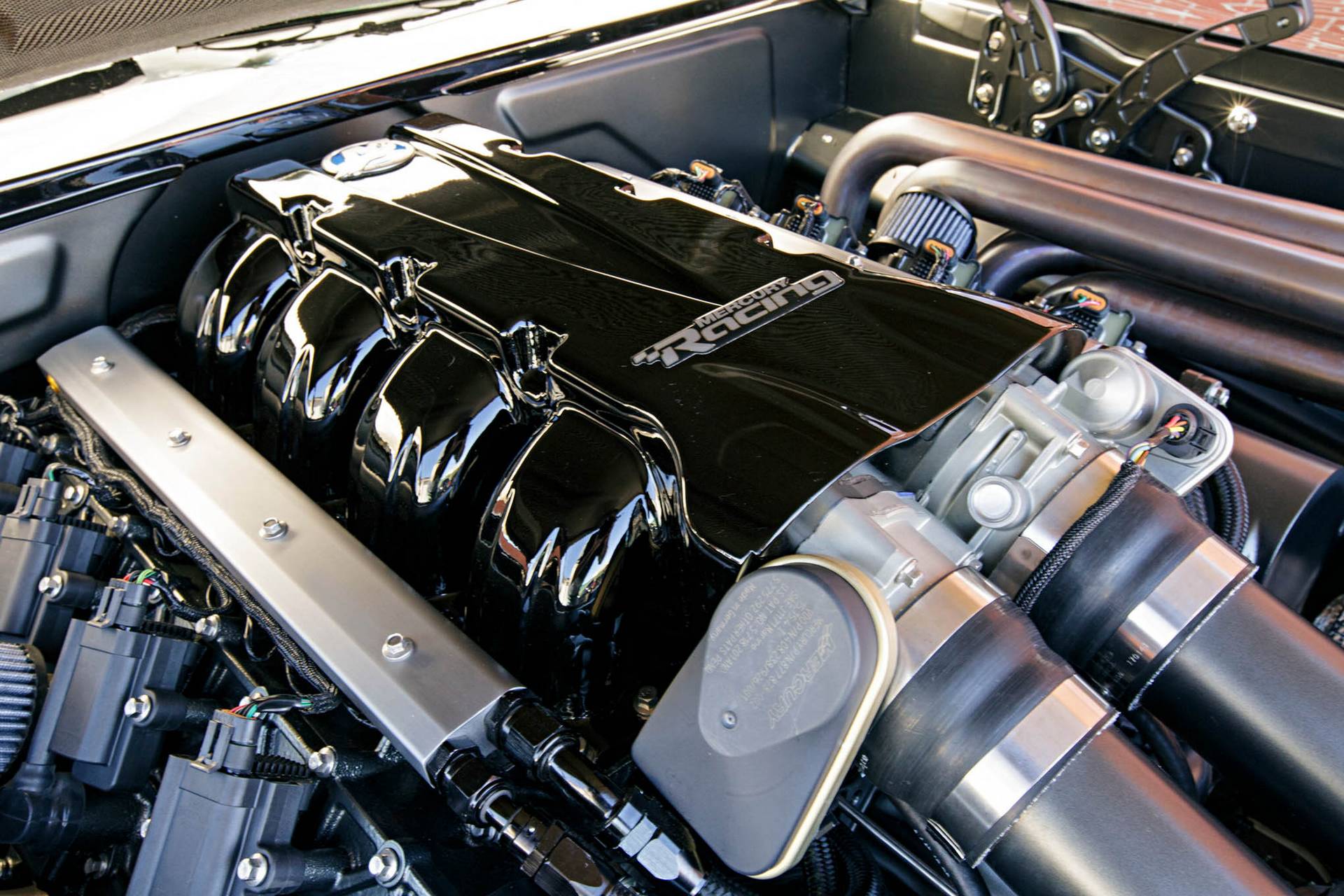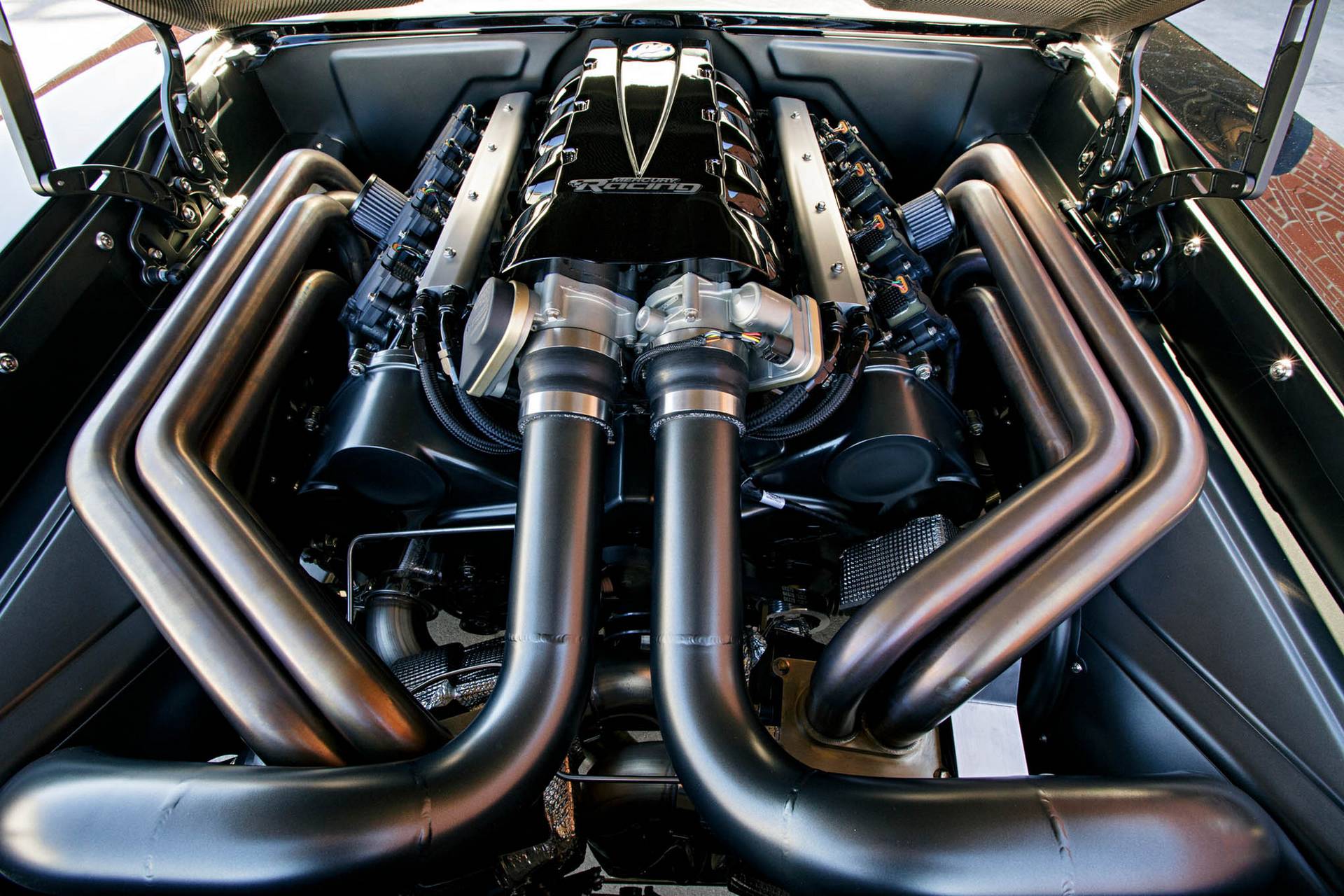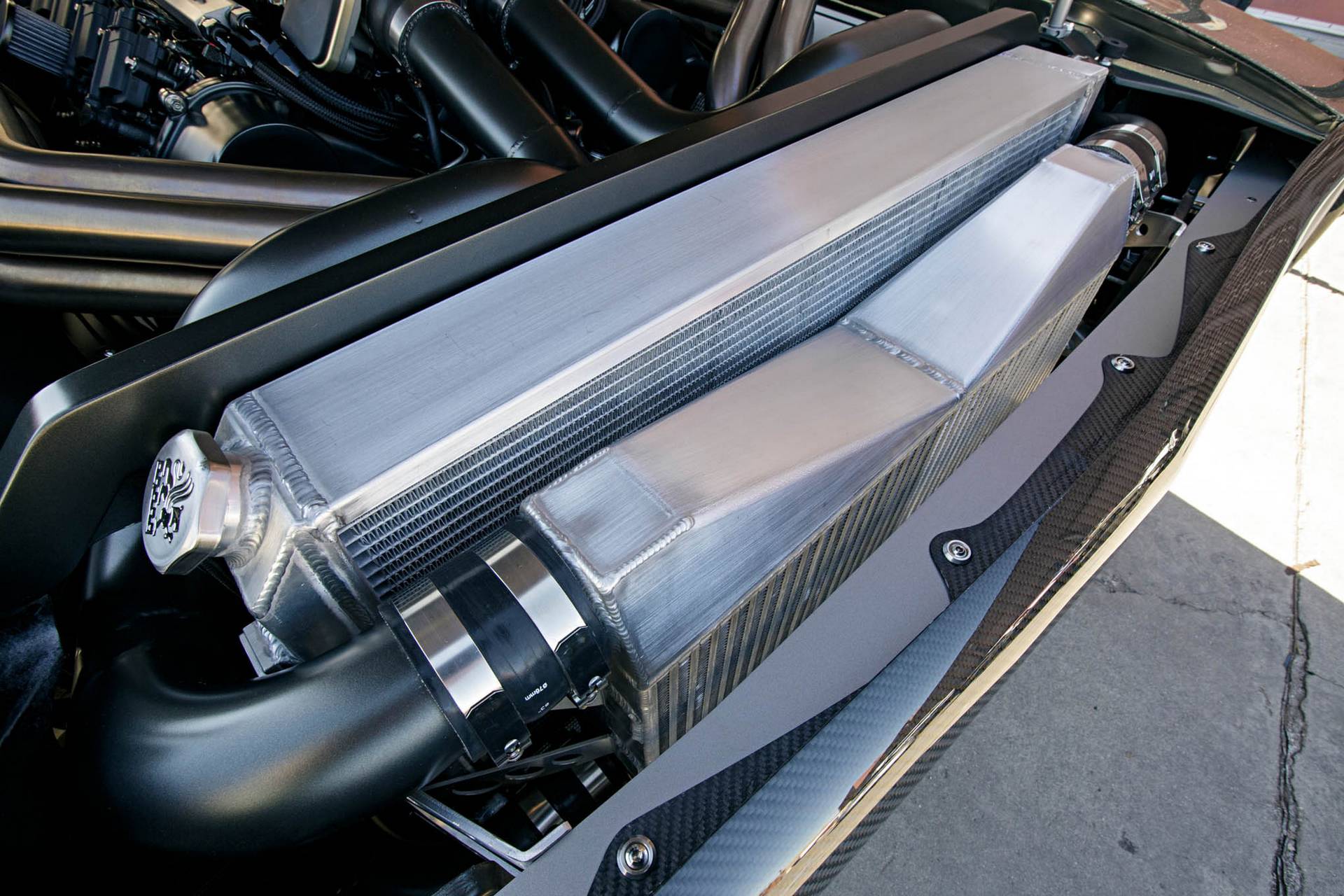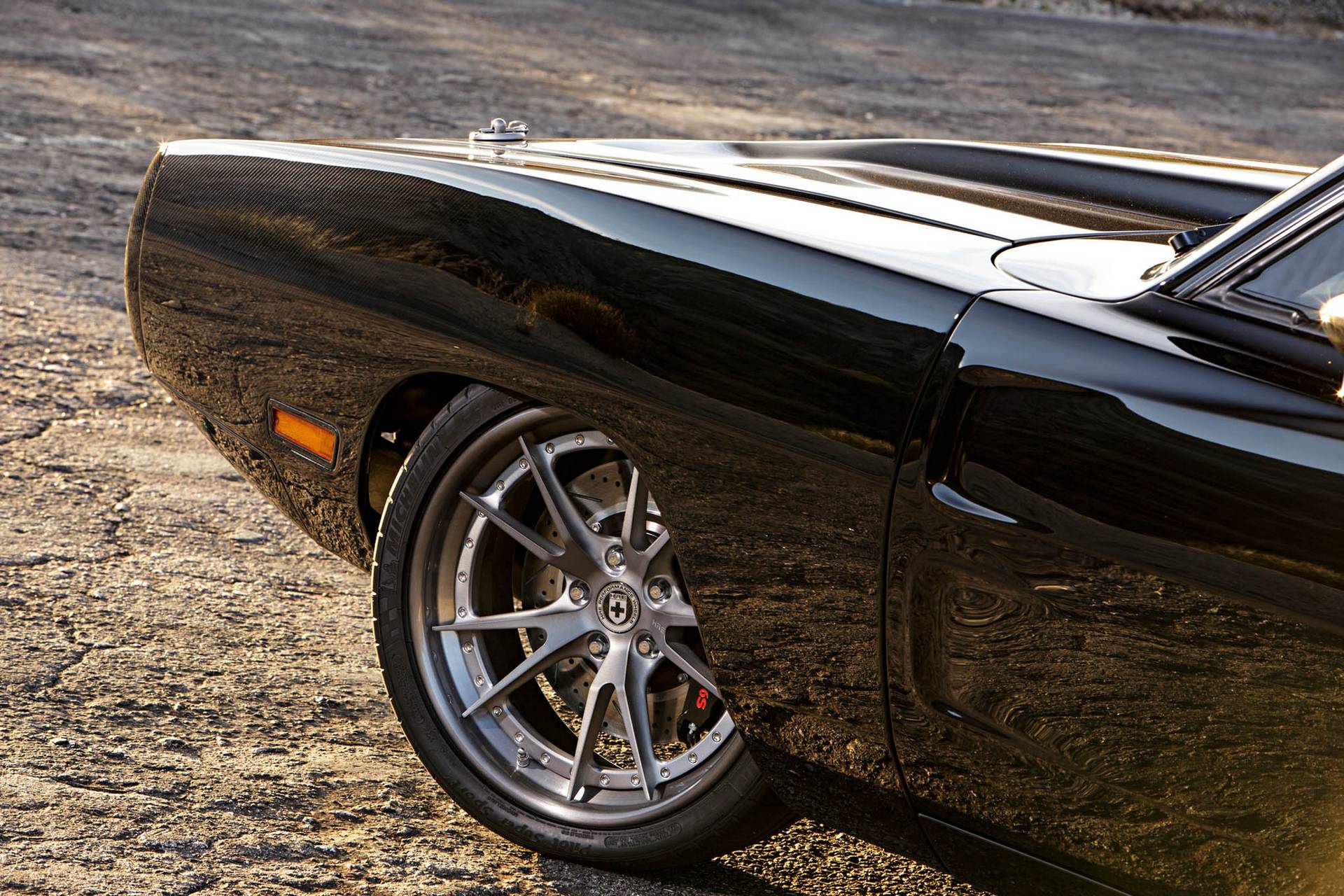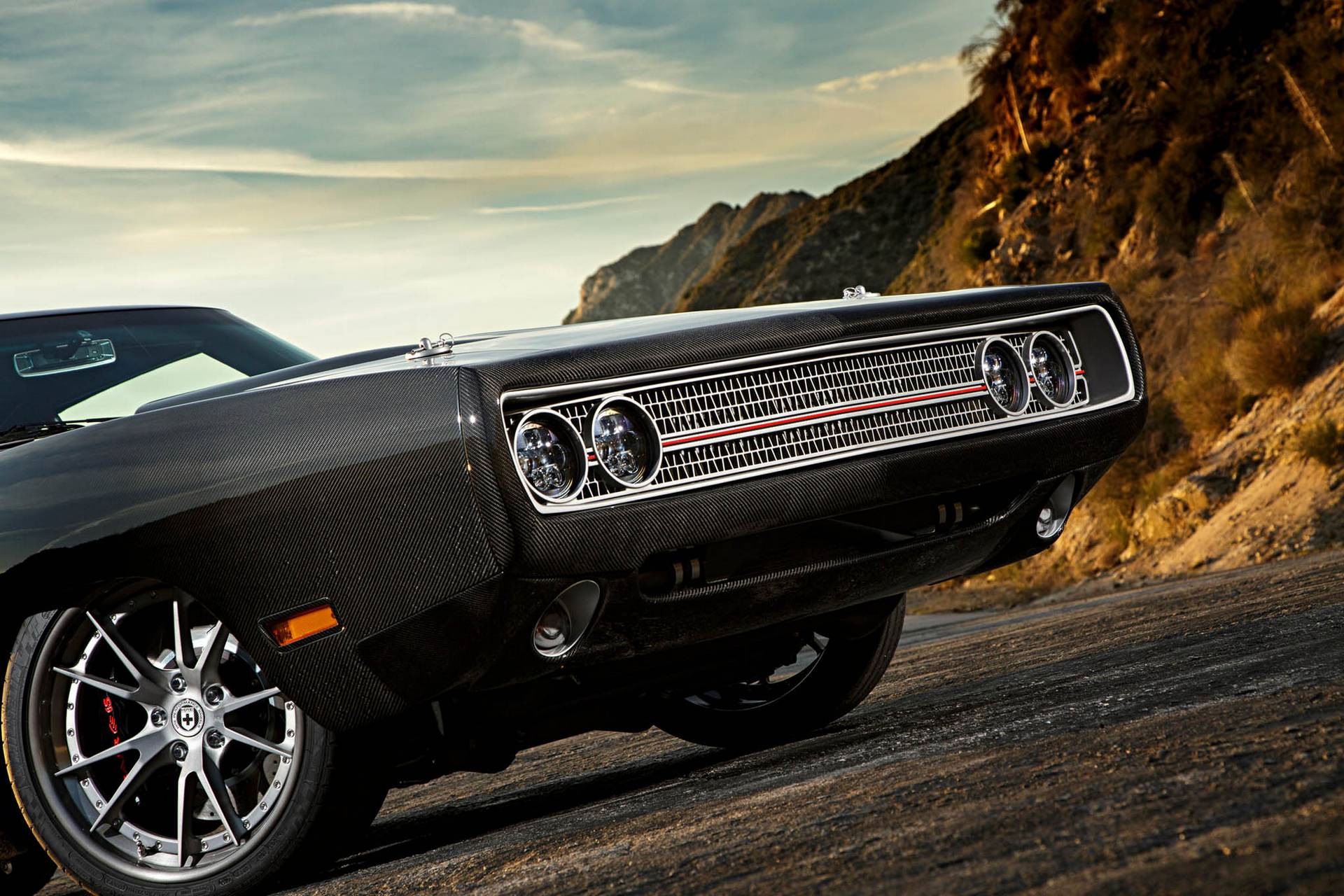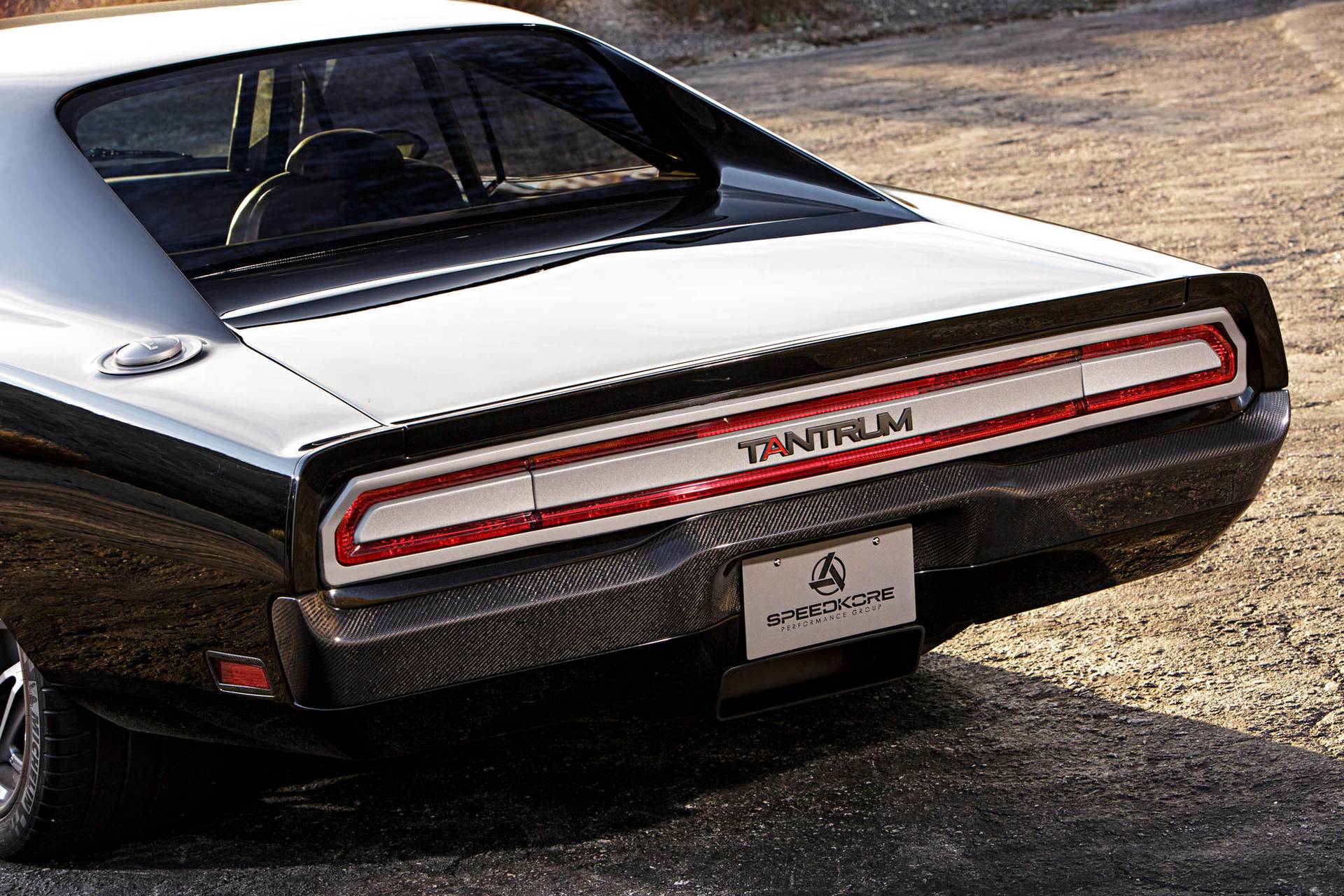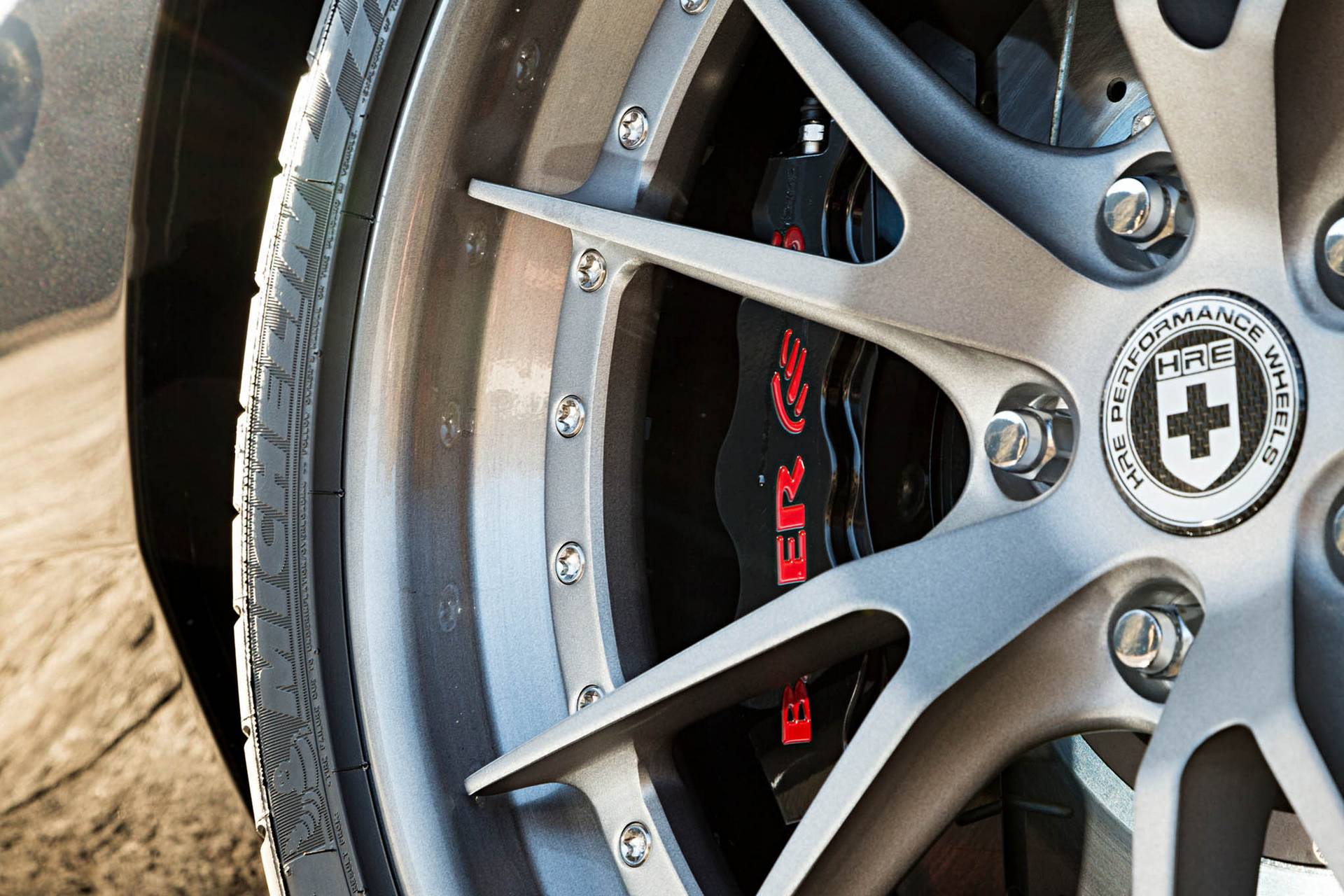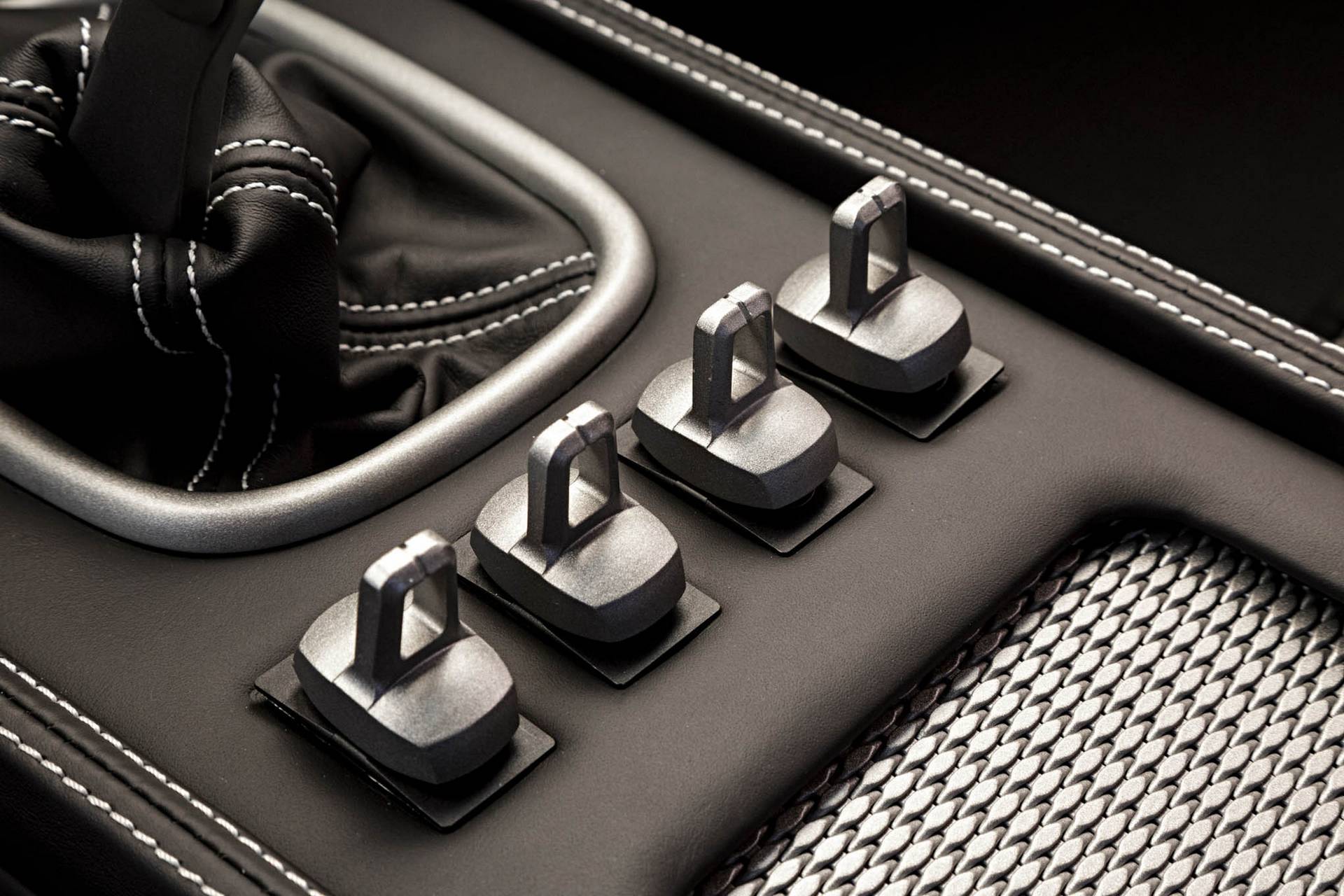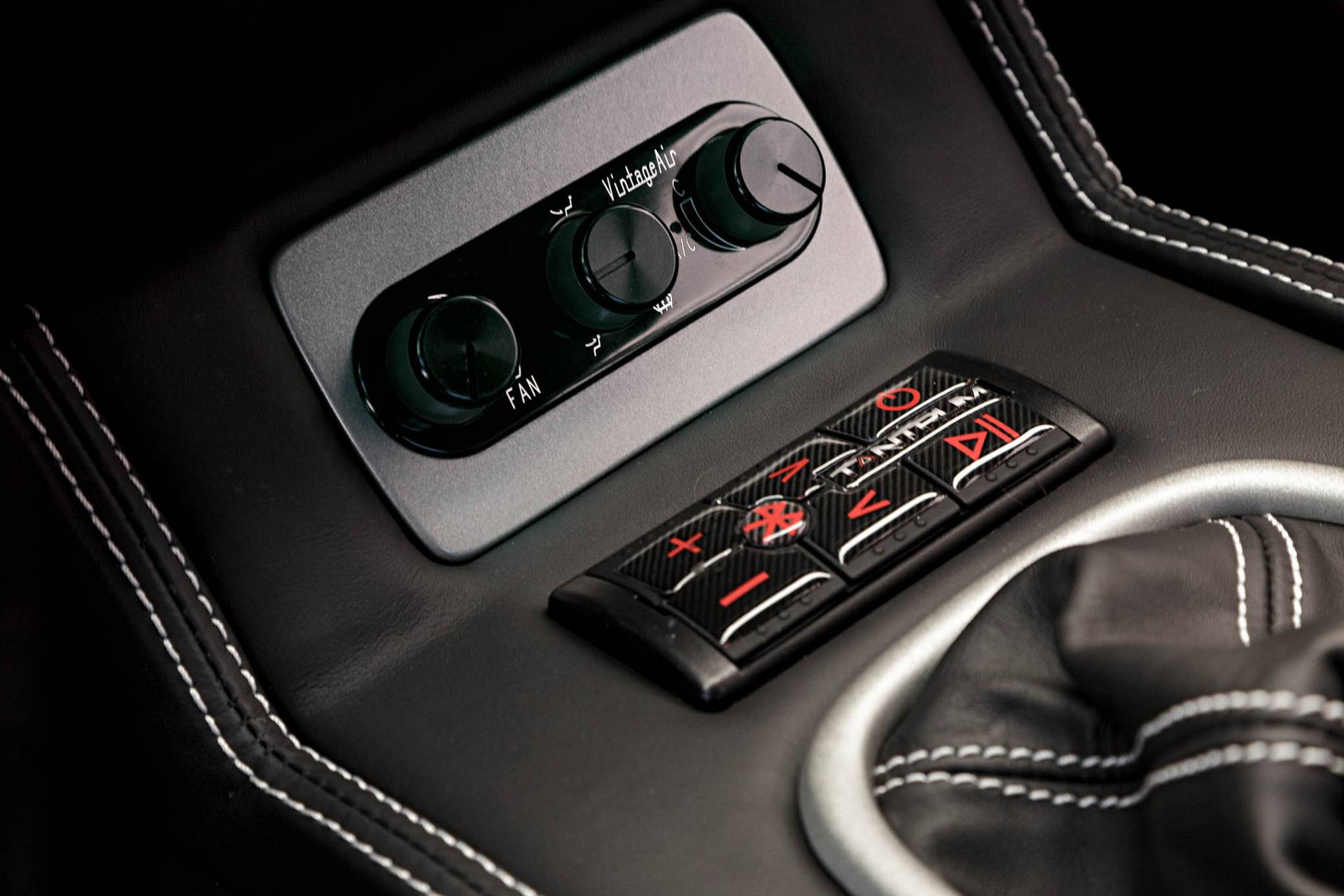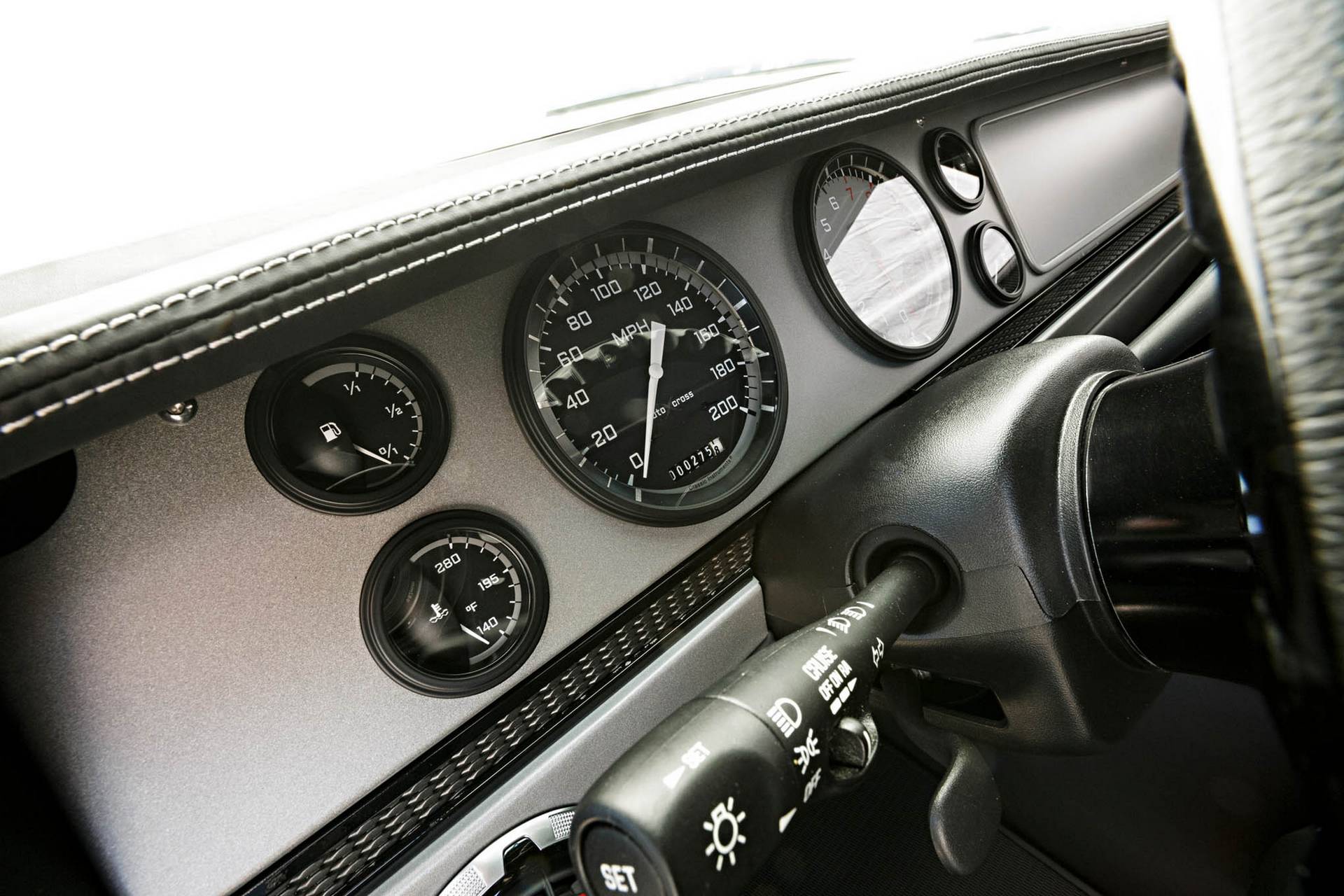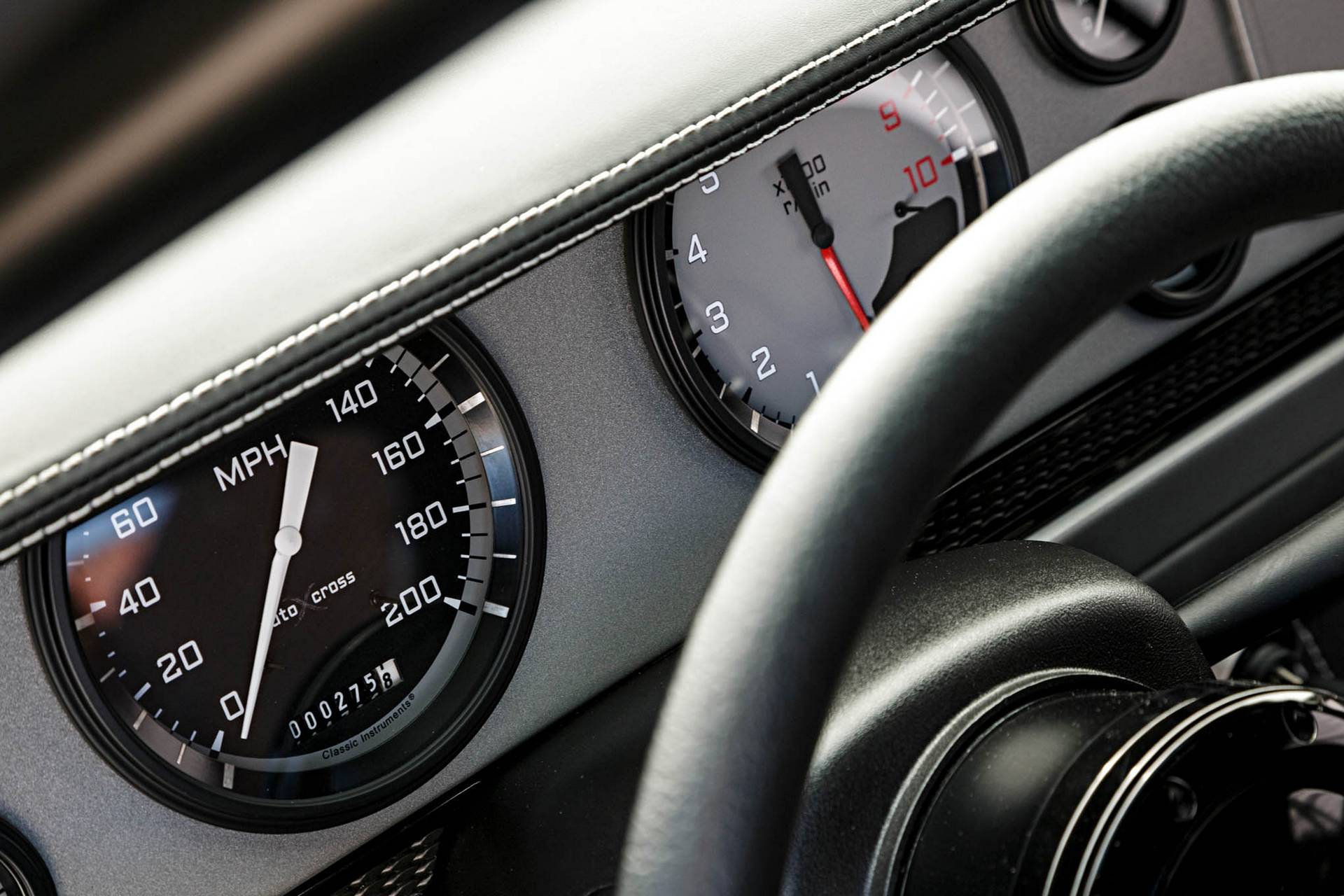When it comes to Pro Touring cars, a.k.a. “restomods”, Wisconsin based SpeedKore Performance is no stranger and it would be an understatement to stay they’ve outdone themselves this time around.
Starting out with a rough condition 1970 Dodge Charger may have seemed like an uphill battle however owner Dave Salvaggio saw that as an opportunity to re-engineer the dilapidated aspects of the car into performance enhancements. As a consequence almost no off the shelf parts were used but were rather custom fabricated.
Salvaggio and his team knew not to tamper with the iconic styling of the Charger that Dodge had gotten so right. Therefore, the 1970 Dodge Charger Tantrum requires a closer look for one to appreciate its qualities.
Behemoth Powerplant
For the first time ever, a street car will make use of a 9.0L Mercury Racing QC4V twin-turbo V8 designed for grueling offshore boat racing. A healthy 1650HP is produced from 26 pounds of boost output by twin 94mm inducer turbochargers. What does QC4V mean? That stands for the quad cam four valve heads which have a large advantage over the pushrod design due to less valvetrain mass resulting in improved valve control and increased capability for engine speed. Obviously it is not as compact as the pushrod design but luckily for the SpeedKore crew, Charger’s have huge engine bays. Due to its aluminum block and head construction the Mercury Racing V8 short block weighs in at just under 700 lbs – less than a factory Hemi.
The 9.0L Mercury Racing QC4V has all the amenities of a modern day big block. Such features include piston oil squirters, dry sump oiling and dual drive-by-wire-throttle bodies. The largest challenge faced by the Mercury Racing V8 is cooling. In marine usage, it has unlimited access to lake or seawater which constantly flows through a heat exchanger to cool the engine. Water-to-water cooling is a great solution but just a bit impossible on the road. To overcome this, Saldana Racing Products designed a severe duty custom radiator and airflow is optimized by Spal fans.
Classic Styling Cues
Leading the styling charge is a hand polished grille CNC cut from a single piece of 6 foot aluminum enshrined by a carbon fiber header panel. The grille sits almost flush with the front of the fenders which allows enough room for a massive air-to-air intercooler to be mounted in front of the radiator. Factory Charger fenders were used to create molds for the new carbon fiber panels as was a slightly modified factory hood. In the back we see more carbon fiber by way of a custom bumper wrapping itself tightly around the rear quarters. Fabric pre-impregnated with resin was used during the formation of all carbon fiber panels ensuring consistent quality and strength with low mass.
While the lighting package did need to depart slightly from holding true to form, we still do notice era-specific qualities. The 1970 Charger of course had hidden headlights however with the QC4V not being able to produce enough vacuum to operate them, they had to go. They were replaced with 4 round headlights much like those of the 1969 Charger 500. Finishing off the rear end, the team installed an OEM 2014 Challenger tail light unit highlighted by an aluminum bezel – a throwback to the 1969 and 1970 Charger’s nearly full length taillights.
Fully Customized Chassis Architecture
All of the fancy bodywork sits on top of a custom fabricated ladder frame chassis which ties into a rollcage. The major advantage here being a significant improvement in rigidity for the previously frameless unibody construction. Up front the car rides on a Roadster Shop clip and a custom four link with Penske double adjustable shocks keeps the rear end on track. Afco springs support all four corners.
Brake & Wheel Package
With great power also comes great responsibility! Bringing the raging Tantrum to a halt are a set of Baer 14 inch rotors and 6 piston calipers. Meanwhile, the beautiful staggered HRE S104’s, 19×8.5 front & 20×12 rear, wrapped in Michelin Pilot Super Sports keep the Charger glued to the road. While it’s tough to ask a tire to put 1650HP to the ground, the rear 345’s definitely try their hardest.
Not So Original Interior
Gabe’s Custom Interiors in San Bernardino, California finished off the 1970 Dodge Charger Tantrum interior with some technologically advanced methods. By transposing Sean Smith’s initial concept drawings into CAD drawings, they were able to CNC cut molds from RenShape, a machinable foam. These molds were then used to create the interior panels which were later outfitted with switches and gauges from Classic Instruments. Accents of stainless steel highlight the charcoal leather and Alcantara wrapped interior panels to provide a finished retro touch.
Check out Jay Leno’s review of SpeedKore Performance’s 1970 Dodge Charger Tantrum on YouTube.




